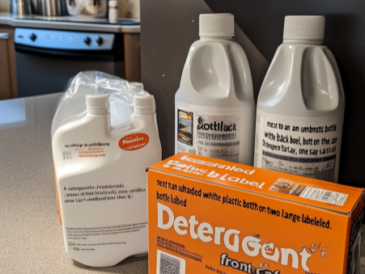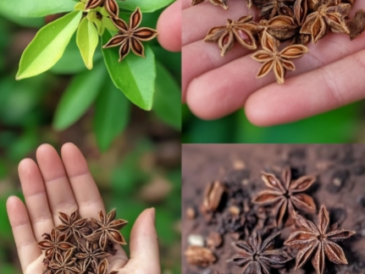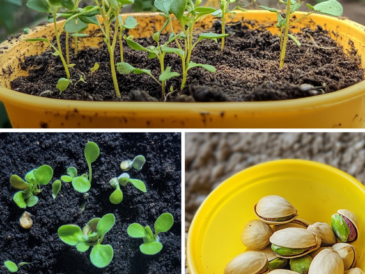It happens every summer: despite your best efforts, your once lush green lawn turns into a patchy, crunchy brown landscape. After months of watering, fertilizing, and nurturing, you may start to wonder, is there an easier way to maintain a beautiful yard?
As temperatures soar and water becomes scarce due to prolonged dry periods, it’s increasingly difficult to keep a traditional grass lawn thriving. But what if there was a better alternative?
Enter creeping thyme, a hardy, drought-resistant ground cover that offers a sustainable, low-maintenance solution to traditional lawns. With its lush appearance, fragrant aroma, and minimal upkeep, creeping thyme is gaining popularity among homeowners looking for eco-friendly options.
Let’s dive into the incredible benefits of replacing your thirsty grass lawn with creeping thyme and why it might just be the perfect choice for you.
Why a Traditional Lawn is Harder to Maintain than Ever 🌞💧
With rising summer temperatures and longer stretches without rain, keeping a conventional grass lawn healthy has become an uphill battle. As municipalities impose water restrictions, the effort to maintain a green yard becomes even more taxing.
But you don’t have to give up on having a beautiful, functional outdoor space. While going fully wild and letting your lawn return to nature may not be an option due to HOA restrictions or municipality rules, you can still make a smart, eco-conscious choice with creeping thyme.
What is Creeping Thyme? 🌿
Creeping thyme (Thymus serpyllum) is a low-growing herb that’s often used in xeriscaping, a landscaping method that reduces the need for irrigation by using drought-tolerant plants. While there are many types of thyme, creeping varieties are especially popular as ground covers for lawns because of their hardiness and aesthetic appeal.
Benefits of a Creeping Thyme Lawn 🌸🌱
1. Spreads Easily and Fills in Your Lawn
Creeping thyme naturally spreads over time, creating a thick, green carpet that fills in empty patches. Once established, it requires very little care and will gradually cover your yard with minimal effort on your part.
2. Drought-Resistant and Water-Efficient
Unlike grass, creeping thyme is highly drought-tolerant. Once it’s established, you won’t have to worry about constant watering or your lawn turning brown during dry periods. Creeping thyme continues to thrive even with minimal water, saving both time and resources.
3. No Mowing Required
Say goodbye to the weekend chore of mowing. Most creeping thyme varieties grow low to the ground, rarely exceeding 4 inches in height. That means you won’t need to mow it regularly, if at all. You can let it spread naturally and enjoy a mow-free lawn.
4. Chokes Out Weeds
Because creeping thyme spreads densely, it outcompetes weeds for space, nutrients, and water. This natural weed suppression means you won’t have to spend as much time or money on herbicides or manual weeding.
5. Handles Foot Traffic
Despite its delicate appearance, creeping thyme is surprisingly tough. It can handle moderate foot traffic, making it a great choice for backyards where kids and pets love to play.
6. Pollinator-Friendly
Most creeping thyme varieties produce beautiful, fragrant flowers that attract beneficial pollinators like bees and butterflies. These blooms add a pop of color to your yard while supporting local ecosystems.
7. Aromatic and Edible
Not only is creeping thyme visually appealing, but it also emits a wonderful fragrance, especially when you walk on it. Plus, you can even harvest thyme from your yard for cooking, adding a fresh touch to your meals.
Xeriscaping: The Future of Lawn Care 💧🌿
As more homeowners become environmentally conscious, xeriscaping has emerged as a practical solution to conserving water and creating sustainable landscapes. Creeping thyme fits perfectly within this trend as one of the best choices for drought-resistant ground covers.
By incorporating creeping thyme into your yard, you’re not only saving water, but you’re also reducing the need for chemical fertilizers, herbicides, and constant lawn care.
Varieties of Creeping Thyme to Consider 🌸
1. Red Creeping Thyme
A favorite among homeowners, Red Creeping Thyme produces stunning red flowers and spreads quickly. It’s ideal for covering large areas and tolerates foot traffic well.
2. Elfin Thyme
If you’re looking for a slower-growing, smaller variety, Elfin Thyme is a great option. It’s perfect for planting between stepping stones or in smaller areas where you want a controlled spread.
3. Woolly Thyme
Known for its soft, silvery appearance, Woolly Thyme is another excellent ground cover that’s tough enough to withstand moderate foot traffic and looks beautiful in any landscape.
How to Replace Your Grass Lawn with Creeping Thyme 🚜🌱
Transitioning from grass to thyme requires some upfront effort but will pay off in the long run with a low-maintenance, drought-tolerant lawn. Here’s how to get started:
- Remove Existing Grass
You can either dig up the existing turf or smother it by laying down cardboard or newspaper and covering it with mulch. This process can take an entire season but will ensure your grass is gone for good. - Plant Thyme Plugs
Once your lawn is prepped, you can begin planting thyme plugs. Start with a small section and expand over time. Water the plugs regularly until they’re established. - Let It Grow and Spread
Creeping thyme will take root and begin spreading throughout your lawn. After the first season, it will require minimal water and care.
Things to Consider Before Switching to Creeping Thyme 🌞🌧️
While creeping thyme is a great alternative to grass, it’s important to ensure your yard is suitable for it:
- Hardiness Zones: Thyme thrives in USDA Hardiness Zones 4 through 10. If you live in a colder zone, thyme may not survive harsh winters.
- Sunlight: Creeping thyme needs at least 4-6 hours of direct sunlight each day. If your yard is mostly shaded, thyme may not grow well.
- Drainage: Thyme prefers well-drained soil. If your yard tends to stay soggy after rain, it may lead to root rot in thyme plants.
Enjoy the Benefits for Years to Come 🌱✨
While transitioning to a creeping thyme lawn may require some initial effort, the long-term benefits make it worthwhile. Once established, your thyme lawn will require minimal maintenance, save water, and provide a beautiful, fragrant space for you and your family to enjoy for years.
With a thyme lawn, you’ll not only have a gorgeous, eco-friendly yard, but you’ll also be doing your part to conserve resources and support local pollinators. So why not make the switch to creeping thyme and enjoy the perks of a beautiful, sustainable lawn?




